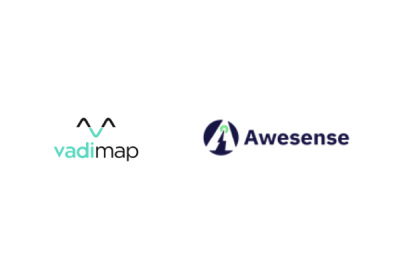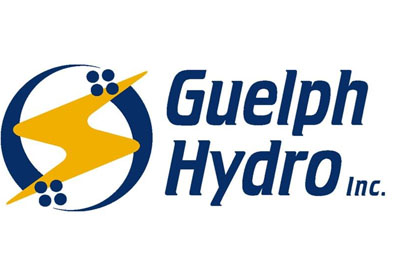Awesense and VadimUS Partner on Nanogrid Integration Platform

June 27, 2021
By Blake Marchand
Awesense and vadimUS recently announced a collaboration to address roadblocks faced by electric utilities in nanogrid integration, as well as power quality issues for commercial and industrial (C&I) facilities.
The partnership couples the Awesense Digital Energy Platform with VadimUS’ VadiMAP turnkey solution. Essentially, to bridge the gap on renewable energy for utilities and C&I customers. Power quality is becoming more and more of an issue. Renewables and distributed energy resources (DERs) can be utilized to alleviate that stress on the centralized grid, although the infrastructure and systems need to be in place to facilitate the transition.
VadimUS CEO, Dan Boucher, commented via press release that the aim of the partnership is to develop the most reliable distributed energy resource possible, and, “one that both the utility and the real estate property owner can use together to help them reach their goals faster.”
VadiMAP offers a fully online platform and ‘turnkey’ solution to integrate renewable energies into commercial and industrial facilities. While Awesense’s digital energy platform focuses more on providing data and insights so utilities can more fully understand what is happening with their systems. In part to help identify optimal candidates for nanogrid adoption.
We spoke with Andrew Yague, Strategic Alliance & Business Development Lead with Awesense and Jeremy Boucher P.Eng. Director of Operations with VadimUS to gain more insight into the partnership and what they want to accomplish.
Yague has been with Awesense for two-years, working on partnerships and business development, developing relationships with partners and utilities. “I have a background in computer science, which fits well with the kind of work we’re doing at Awesense. But I moved more towards the commercial route at the beginning of my career.”
Boucher has an electrical engineering background and manages projects for VadimUS as Director of Operations. “My background is more into electrical distribution, more into breakers, transformers to maintain them and to install them. But I had a big shift into renewables – with the integration of renewables into buildings you need to have knowledge of distribution.”
What is VadiMAP?
“VadiMAP is a turnkey solution for organization, either commercial, industrial, or institutional seeking to realize renewable energy systems for their buildings. When I say turnkey, we have a portion that is software that we have developed ourselves to prescribe the optimal renewable energy system for that building.” explained Boucher, adding that the platform is focused on decentralization behind the meter with renewable energy integration. The second turnkey element is the installation, for which they work with installation partners to install nanogrids at the facility.
What’s the difference between a nanogrid and a microgrid?
Boucher: “A nanogrid is smaller, its behind the meter. A microgrid can be on several different buildings and you can aggregate those DERs (Distributed Energy Resources), but we are focusing behind one meter on the building. It could be solar energy, batteries, smart EV charging, the control of all those loads or sources.”
Why was the partnership necessary to deliver this solution for utilities as well as commercial, industrial, and institutional customers?
Yague: “The value of the partnership became clear as a result of our joint expertise – on the Awesense side, working with utilities primarily – we saw an opportunity with our utility customers that, in order to decarbonize their systems and maintain the reliability of power delivery, especially for critical C&I customers, they were going to have to take advantage of renewable nanogrids on-site.”
“Because Awesense is more specialized in the utility sphere, we saw an opportunity where Awesense could offer the utility our software in identifying preferential candidates for deploying nanogrids via analyzing their data. Over the years we have become experts in energy data. We hadn’t really crossed over into the C&I space that much, we’ve done some work there with industrial customers in helping them optimize their behind-the-meter facilities and their systems, generally on a large scale. But we didn’t have the ability of what VadimUS has, which is prescribing a nanogrid and deploying that nanogrid, and then controlling that nanogrid. Which is a key component, here.”
“That’s where it really came together, with Awesense providing, on the utility side, the visibility into their system, identifying optimal candidates for deploying a nanogrid that are in need of improved reliability and resiliency. As well as the ability to track that system’s performance over time and how it impacts the overall grid system.”
“Utilities are trying to expand their revenue streams, decarbonize, and offer grid services to ensure that C&I customers power quality isn’t effected by the inherency of renewables as they become increasingly pronounced in the power system.”
“There are four steps: The initial step is Awesense providing its grid visibility situational awareness and analytics into suggesting optimal candidates. Then VadimUS comes in at that stage to help prescribe nanogrid deployments and install the nanogrids, the renawables on-site. The monitoring, the analytics of the systems, and the control of those systems over time, which can be done via a DERMS solution (Distributed Energy Resource Management System). That is a mixture of what Awesense provides in terms of visibility and analysis and what VadimUS provides in terms of controlling the nanogrids.”
Benefits of nanogrid adoption
Boucher: “Benefits for utilities, like Andrew said, you can expand your new revenue streams, new grid services, you can decarbonize C&I customers and decarbonize your distribution, you can build resiliency with decentralization. Because we know the centralized distribution grid is becoming more effected by natural disasters and wildfires. They can maintain visibility into DERs (Distributed Energy Resources) growth and impact, and they can avoid building expensive fossil fuel peaker plants.”
“In each single nanogrid that we will install, we install a nanogrid controller. This nanogrid controller is DERMS ready. If the utility has a DERMS in place, it can communicate with that and enable any type of control.”
Discussing a recent report from S&C Electric and Frost & Sullivan on the 2020 State of C&I Power Reliability, Yague said, “essentially it found over the previous year – from 2019 to 2020 – there was a growth in outages for C&I customers from 20% to 40% in terms of the number of companies effected by power outages lasting less than 5 minutes. Which is actually a fairly significant issue, even though its less than 5 minutes, it can cost around $100,000 per outage. These outages tend to be happening on a monthly basis, so power quality has become a major problem for C&I customers and its being blamed on renewables, however its not renewable’s fault necessarily, it’s the state of the grid. Which just isnt prepared to deliver the power via those renewable resources.”










![Guide to the Canadian Electrical Code, Part 1[i], 26th Edition – A Road Map: Section 10 – Grounding and Bonding](https://electricalindustry.ca/wp-content/uploads/2022/11/Guide-CE-Code-2.png)





